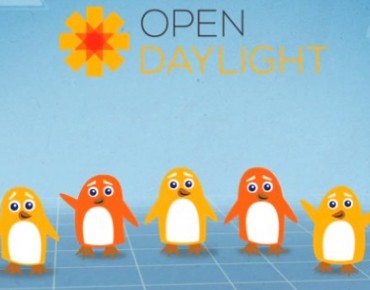OpenDaylight Lifts the Veil on ‘Hydrogen’ SDN Software Stack

The OpenDaylight consortium is trying to do for software-defined networking what Linux did for operating systems. And that is to provide an open source set of tools for virtualizing networks that is created under a collaborative, and yet organized, development effort with as many industry luminaries and IT vendors behind it. This week, OpenDaylight gave the first glimpse of the first release of its SDN stack, code-named "Hydrogen" and comprised of bits of software donated by various members of the consortium.
Here's the problem that SDN is trying to solve and why so many people are making noise about it. Switches and routers are like the mainframes of days gone by, with command-line wizards with deep knowledge of esoteric software knowing how to configure the settings to allow devices to talk to each other in a secure fashion. Configuring these devices is labor-intensive, requires specialized knowledge, and cannot happen fast enough to deal with rapidly changing network traffic. So you often end up overprovisioning your network to deal with peaks.
So SDN wants to take Layers 2 through 7 in the network stack – from switching all the way through routing and on up to several application layers – and virtualize them. By doing this, these functions become programmable and automatable, just like a virtual machine running on a hypervisor on a physical server. The SDN stack has an out-of-band controller that aggregates the control planes of switches and routers (in both the physical and virtual varieties) and can reconfigure them on the fly.
In many cases, the OpenFlow protocol developed by researchers at Stanford University are at the heart of the SDN stack, but Cisco Systems and Hewlett-Packard, which are the three biggest suppliers of switches and routers in the world, are taking their existing network controllers and opening them up with APIs to create SDN controllers. Juniper Networks bought Contrail Systems to get its own SDN stack. Contrail, founded in early 2012, was startup that was working on its own SDN controller – one not based on OpenFlow but a number of existing network protocols – and that is why Juniper was willing to spend $176 million to acquire the company on the day it was set to uncloak from stealth mode last December. As we report elsewhere in EnterpriseTech, Juniper has just released a commercial-grade version of its Contrail Controller as well as an open source version that is separate from the OpenDaylight project, called OpenContrail.
Ironically, Cisco, Juniper, and HP are members of the OpenDaylight project, which is running out of the Linux Foundation just like the Linux operating system kernel. Network equipment makers Brocade Communications, IBM, NEC, Arista Networks, and Ericsson have joined the effort. VMware, Citrix Systems, Red Hat, and Microsoft, which all have stakes in extending server virtualization with network virtualization, are also part of the project, and SDN startups PlumGrid and Nuage Networks joined early. Intel and Huawei Technologies, which have big stakes in networking hardware, also joined up after the project was founded back in April. Big Switch Networks, which had initially joined, was irritated that Cisco's controller code was picked over its own and left the group in June.
Back in April, when the project was launched, OpenDaylight said that its SDN framework and the plug-ins for it would be open source and developed under an Eclipse Public License v1.0. To make the controller absolutely portable, it would have hooks into specialized hardware and would be written in Java. Python was chosen for graphical elements of the stack.
Importantly, the OpenDaylight framework includes a Service Abstraction Layer, which is akin to a hypervisor on a server that will allow for other interfaces and protocols to be plugged into the OpenDaylight controller. Above the controller is a set of REST APIs that in turn reach up into network orchestration and abstraction applications.
OpenDaylight has given a name to the first release of its SDN stack, which is called "Hydrogen" after the first atom the universe created. The software will support physical switches through a variety of protocols as shown above in the block diagram as well as Open vSwitch virtual switches, which were created by Nicira a few years back but are now controlled by VMware, which paid $1.26 billion for Nicira back in July 2012 to get Nicira's virtual switch as well as its NVP Controller. Other virtual switches can plug into the OpenDaylight controller as well.
The SDN stack that was previewed last week also includes two network services that run above the controller, and many more will no doubt follow. The first is called the Affinity Metadata Service, which helps with network policy management. The second is called Defense4All and it is a network application that provides protection against distributed denial of service attacks on networks.
The plan originally was to get the OpenDaylight code out in the third quarter, but now the target date is December. It will be interesting to watch how the various network giants all dance around this project, trying to commit code and influence it.











